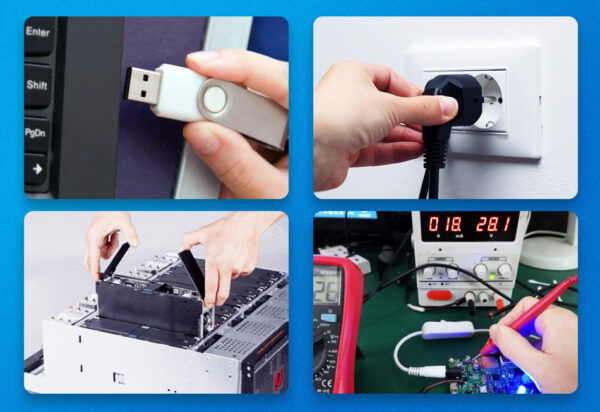How to Avoid Hot-Plugging Behavior of Products: A Comprehensive Guide
In today’s fast-paced technological environment, products are constantly being connected and disconnected from various devices. While this convenience is undeniable, hot-plugging – the act of inserting or removing a device while it is powered on – can pose significant risks to both the product and the user. This guide aims to provide you with a comprehensive understanding of hot-plugging and practical strategies to avoid this potentially harmful behavior.
Understanding the Risks of Hot-Plugging
What is Hot-Plugging?
Hot-plugging refers to the practice of connecting or disconnecting hardware components, such as USB devices, external hard drives, or peripherals, while the system is still powered on. While some devices are designed to support hot-plugging, many are not, and the consequences can be severe.
Potential Risks
- Data Loss: Unexpected disconnection can lead to data corruption or loss, especially if the device was in the middle of a write operation.
- Hardware Damage: The sudden change in power or signal can cause electrical stress, potentially damaging the device or the port it’s connected to.
- System Crashes: Hot-plugging can disrupt the normal operation of the system, leading to crashes or freezes.
- Safety Hazards: In extreme cases, hot-plugging can pose a safety risk, such as electrical shock or fire.
Strategies to Avoid Hot-Plugging
1. Educate Users
The Importance of Awareness
Raising awareness among users about the risks associated with hot-plugging is the first step in preventing this behavior. Incorporate educational materials, such as user manuals, online tutorials, or in-app notifications, to inform users about the potential dangers.
Training Programs
For products used in professional or industrial settings, consider implementing training programs that specifically address hot-plugging risks. Ensure that all users are adequately trained before they operate the equipment.
2. Design for Safety
Hot-Plug Detection
Incorporate hot-plug detection mechanisms into your product design. This can include physical locks, sensors, or software algorithms that detect when a device is being connected or disconnected and prevent power or data transfer until it’s safe to do so.
Robust Connectors
Use high-quality, robust connectors that can withstand the wear and tear of frequent insertion and removal. Ensure that the connectors are securely fastened to prevent accidental disconnection.
3. Implement Software Safeguards
Safe Disconnection Prompts
Develop software that prompts users to safely disconnect devices before powering down or unplugging. This can be done through pop-up notifications, system tray icons, or dedicated software applications.
Automatic Data Sync and Save
Implement automatic data synchronization and save features that ensure all data is properly saved and transferred before a device is disconnected. This reduces the risk of data loss due to unexpected disconnection.
4. Encourage Best Practices
Establish Guidelines
Create and distribute guidelines that outline best practices for connecting and disconnecting devices. These guidelines should be easily accessible and regularly updated to reflect any changes in product design or user behavior.
Monitor and Enforce Compliance
In environments where hot-plugging is a particular concern, monitor user behavior and enforce compliance with established guidelines. This can be done through regular audits, user feedback, or automated monitoring systems.
Conclusion
Avoiding hot-plugging behavior is crucial for ensuring the safety, reliability, and longevity of your products. By educating users, designing for safety, implementing software safeguards, and encouraging best practices, you can significantly reduce the risks associated with hot-plugging. Invest in these strategies today to protect your products and your users from the potential hazards of hot-plugging.

